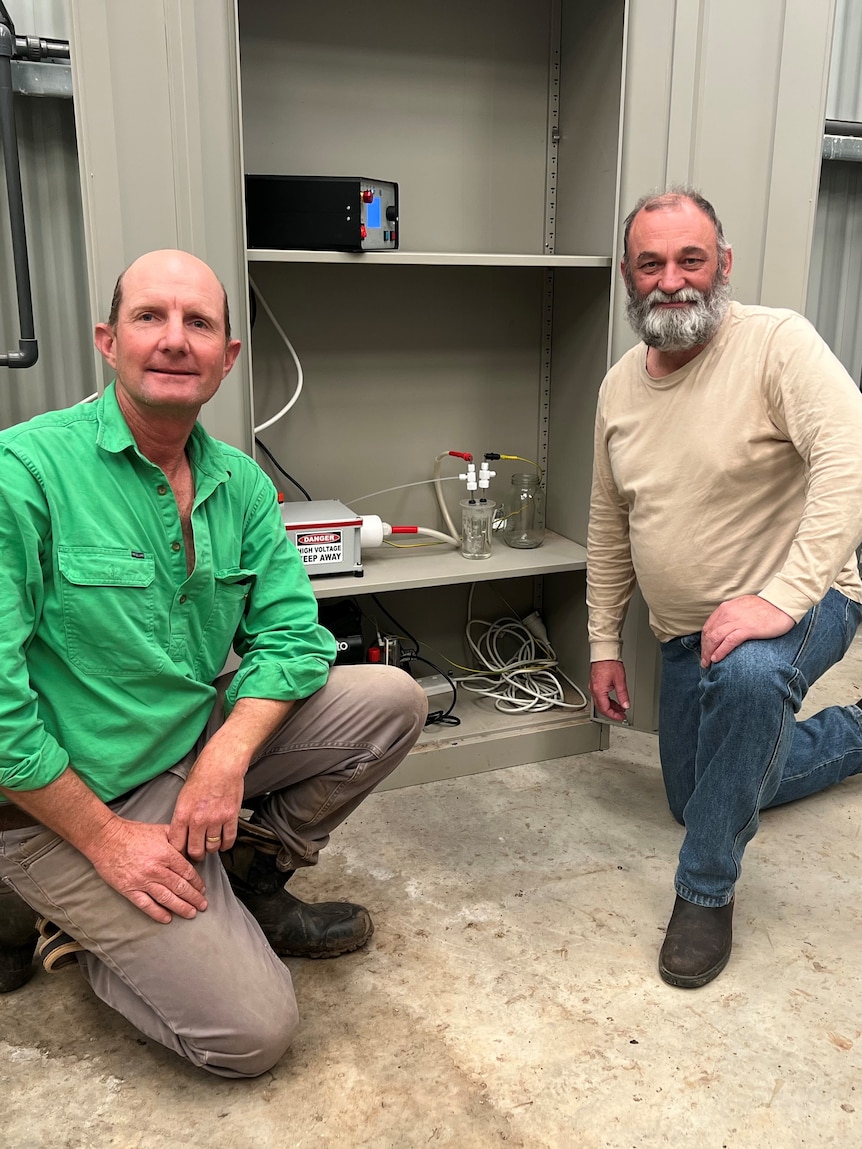After a thunderstorm storm, you might have noticed that plants become greener and more lush — more so than after your average rainy day.
Key points:
- A trial on a vineyard near Auburn in South Australia has been trying to produce nitrogen fertiliser using “lightning” in a bottle
- Development of non-thermal plasma unit technology could help farmers produce their own nitrogen fertiliser
- If powered using solar panels it could be a green option for fertiliser production
That’s because lightning has the ability to “fix” the nitrogen in the air and make it available to plants.
A trial on a vineyard near Auburn in South Australia has been trying to replicate this process, by effectively creating “lightning in a bottle”.
The work has come about due to the development of technology called a non-thermal plasma unit that effectively acts like controlled lightning, or an arc welder.
Research scientist Greg Butler is in the process of commissioning and trialling the technology, to see whether it can effectively replicate the natural nitrate creation process found in thunderstorms.
To do that he has set up a system where air is forced into a container of water using an air compressor.
Given nitrogen makes up about 78 per cent of the atmosphere, air becomes the nitrogen source.
“If you imagine having an arc welder in a beaker of water, and then feeding air past it, it’s effectively mimicking lightning in a very controlled fashion,” he said.
The unit breaks apart the molecular forms of the nitrogen and oxygen in the air and they are reformed as nitric oxide and dissolved into the water.
“From there, we harvest that nitrogen into a liquid and then our aim is to push it out through the fertigation system,” Mr Butler said.
Fertigation is the process of delivering dissolved fertiliser to crops via an irrigation system.
Liquid fertiliser for farmers
Michael Paxton is the vineyard manager for the Randall Wine Group in Clare, where the trial is taking place.
The property already has a fertigation system, so he was keen to try the technology.
“Traditionally fertigation is the most efficient fertiliser, particularly [for getting] nitrogen to the roots — so that part of it is well rehearsed by us,” Mr Paxton said.
“This technology, pulling it out of the air, seems like a fantastic opportunity.”
Mr Paxton was attracted to the idea because he believed it offered environmental and financial benefits.
“The machine will run from solar panels, so that will be relatively low cost … compared to buying nitrogen” he said.
“As all farmers know urea is extremely expensive, so I think it’s going to be a really good option.”
The Haber-Bosch Process of producing conventional nitrogen fertiliser by mixing nitrogen from the air with hydrogen from gas at high pressure to create ammonia was developed about 120 years ago.
Mr Butler said it was a very energy-intensive process, so if this new system could be powered using solar electricity, it could take out the embodied energy in the production of nitrogen.
“Also because it’s produced locally, there’s a lot less transport emissions associated with that nitrogen as well,” Mr Butler said.
The project is one of the recipients of the federal government’s first round of supply chain resilience grants and has received $232,000 in matched-dollar funding.
Mr Butler said he would be commissioning and trialling the technology over the next few months.
“So what that really means is fine-tuning it, starting to understand about the recycling and concentrating, getting it pumped into the fertigation system [and] doing some simple trials on relatively small blocks,” he said.
“And from there, we look at scale and further efficiency”.




